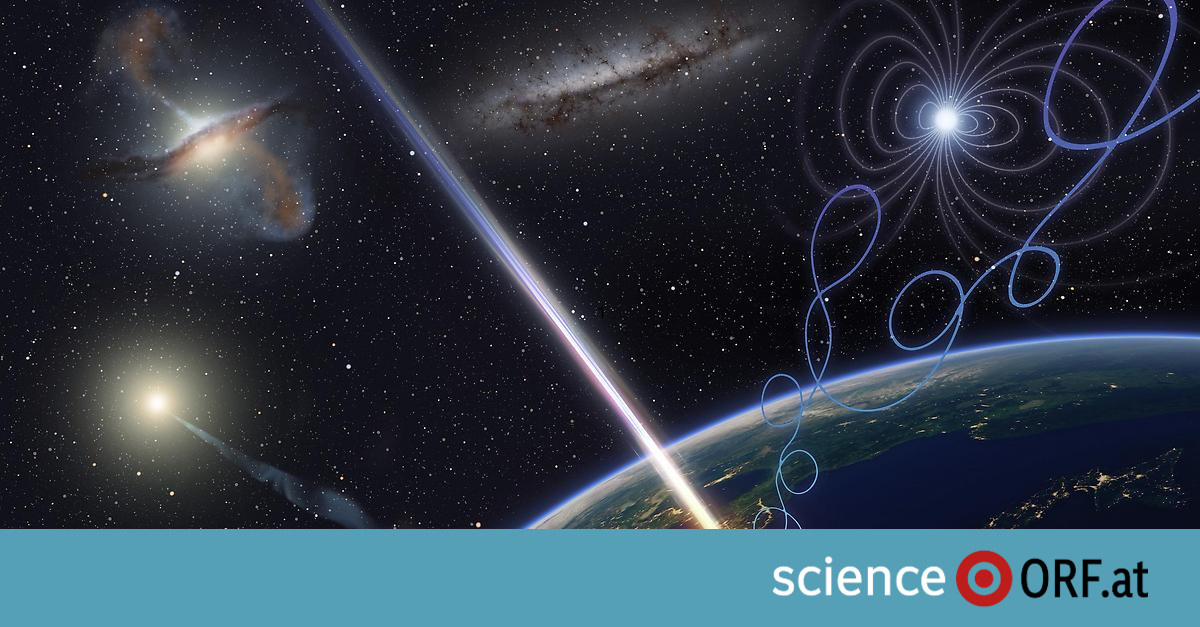Cosmic rays consist of high-energy charged particles, which can come from the Sun, the Milky Way, and also from other galaxies. Particles travel through the universe and almost constantly fall to Earth. However, extremely high energy, as measured by the Amaterasu particle, is extremely rare.
On May 27, 2021, Amaterasu arrived on Earth, as the research team is doing now In “Science” magazine He writes. It had a calculated kinetic energy of about 244 EeV (exa electron volts). This makes the Amaterasu particle one of the extremely rare ultra-energy cosmic particles, ten to one hundred million times more powerful than what man-made particle accelerators can produce.
“When I observed this extremely high-energy cosmic ray, I thought it must be a mistake because it had an energy level unprecedented in the past three decades,” the study author said. Toshihiro Fuji from Osaka Metropolitan University in a statement. The researcher and his team gave the particle the name “Amaterasu“, named after the sun goddess in the Japanese Shinto religion.
Detector in the Utah desert
Cosmic radiation is detected when the air showers it emits are observed from Earth, for example – as with Amaterasu – with “Telescope array“A detector in the desert of the American state of Utah. Research on this rare phenomenon has been ongoing here since 2008. The desert location provides the ideal conditions for it: dry air, because humidity would absorb the ultraviolet rays needed for detection, and a dark night sky so light pollution does not obscure its molecules.

The project, led by the University of Utah and the University of Tokyo, consists of 507 detector stations arranged in a square grid. This covers an area of 700 square kilometers. The large-area arrangement makes it possible to reconstruct the energy and direction of occurrence of particle radiation.
“Particle physics is still unknown”
In the study, now published in the journal Science, the research team describes the Amaterasu particle, evaluates its properties and comes to the conclusion that high-energy cosmic rays could follow hitherto unknown particle physics. Because according to measurements it seems that “Amaterasu” is from Local vacuum She came – a vast, empty region of space bordering the Milky Way.
“There is nothing energetic enough to produce cosmic rays. That’s the secret,” said the physicist and study co-author. John Matthews from the University of Utah, who is conducting research on the “Telescope Array” project.
The “Oh my God” particle has been puzzling since 1991
“Amaterasu” can only be compared to ““Oh my God” molecules. Founded in 1991 by “Fly’s eye“The detector at the University of Utah detected a higher calculated kinetic energy: 320 MeV. ‘Oh my God’ surprised the astrophysicist at the time. The same was true for ‘Amaterasu’ more than 30 years later. Particles carrying ‘Oh my God’ energy are released and… Amaterasu crossed the universe relatively unchecked, so one can assume its origin is linked to the most energetic events in the universe: black holes, gamma-ray bursts, active galactic nuclei, and supernovas, for example.
Recorded signal of the Amaterasu particle.
But even these events are nowhere near energetic enough to produce such cosmic rays, according to the research team. On the one hand, nothing in the Milky Way is capable of generating “omg” and “Amaterasu” energy, but on the other hand, the particles have more energy than cosmic rays traveling to Earth from other galaxies could have – at least in theory. So the particles shouldn’t actually be there.
“No promising astronomical object corresponding to the direction from which cosmic rays came has yet to be identified. This points to unknown astronomical phenomena and new physical origins beyond the Standard Model,” Fujii said.
The search continues
The international research team of the “Telescope Array” project hopes that further research on the “Amaterasu” particle will shed more light on the issue of the origin and spread of this rare, ultra-energy cosmic ray. In addition, the project’s surface detector in the Utah desert will be expanded to include 500 new detection stations. This means that air showers caused by cosmic radiation can be recorded over an area of 2,900 square kilometers – instead of the previous 700 km. In the future, more events like “Oh My God” and “Amaterasu” should be observed – in order to one day solve the mystery of the origin of high-energy cosmic radiation.

“Social media evangelist. Baconaholic. Devoted reader. Twitter scholar. Avid coffee trailblazer.”








More Stories
Longest jets in the universe discovered – giant particle streams as long as 140 Milky Way galaxies in a row
New method reveals 307 supernova remnants
Snapchat is upping the ante on augmented reality glasses